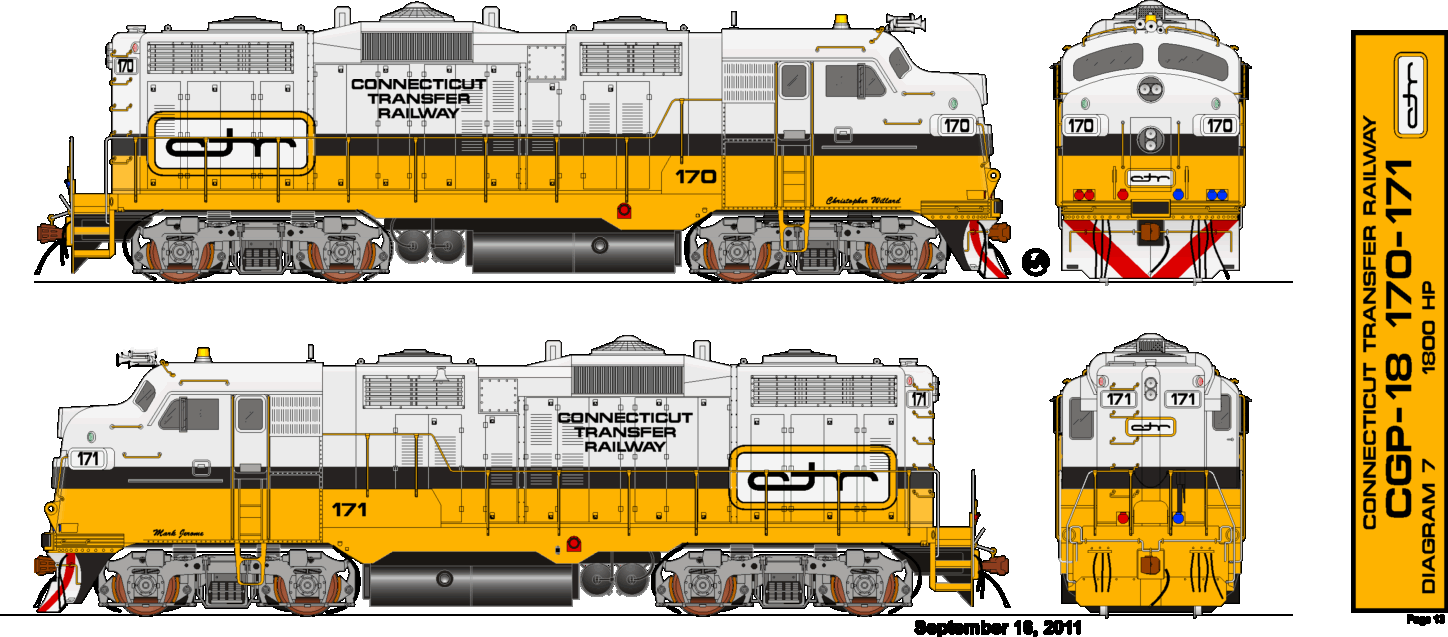was there ever a real f3 gp9 hybrid
someone said mexico made 2 of them
if so what was the classification
looked like this

and i saw one in a book that had a front walkway
and cgp9 can't be the real name for it
|




|
was there ever a real f3 gp9 hybrid
someone said mexico made 2 of them
if so what was the classification
looked like this

and i saw one in a book that had a front walkway
and cgp9 can't be the real name for it
Replies sorted oldest to newest
In a word, NO. Not from EMD anyway.
Looks like a standard geep with a F or E unit hood grafted onto it. Obviously it's not a F unit frame. I guess you could build this, but the question would be WHY? It's not like there is a shortage of standard EMD cabs in the world, likely never was. If your labor is worth less than material costs, I guess it MIGHT make sense on some level if you already had the parts laying around.
Mexico had a reputation for grafting different cabs/parts/panels onto different locomotives. Most probably, a couple of GP9 wrecks were sold off and bought by a Mexican company and the cabs from a couple of dead F-units were grafted on. As DieselBob said the F-unit frame is an entirely different animal. In fact, in some respects, the F-units were unibody locomotives with the superstructure providing some of the frame integrity. ATSF discovered this when they started converting them in the CF7 program.
Very nice colors. Ohhhh lala
Well, your locomotive certainly looks like an interesting project that you could build from an Atlas GP7 or GP9 and an Atlas F-unit body.
Queensland Railways 1250 class locomotives were the same idea of a cab unit with a hood car-body.
17 units built by English Electric 1959 - 1963. https://en.wikipedia.org/wiki/..._Railways_1250_class
The EMD BL1 - BL2 models were an attempt to combine the aesthetics of a streamlined nose with a hood carbody that allowed better rearward visibility. It was a sort of F-GP hybrid. The GP models won out because of their greater functionality for typical road service and better equipment access.
Ace posted:The EMD BL1 - BL2 was an attempt to combine the aesthetics of a streamlined nose with a hood carbody that allowed better rearward visibility. But the GP models won out because of their greater functionality for typical road service and easier equipment access.
The GP7 "won out" because the BL2 was so VERY difficult for the Locomotive Devision, of EMD, to assemble. The Superintendent of the "Big Bay" complained profusely to Manufacturing Engineering as well as Design Engineering, about what a problem the BL2 was to build. Due to that modified pre-stressed carbody design, once the underframe was turned right-side-up, then the unit could no longer be "moved down the line" until it was completed.
Thus, Mr. Dick Dillworth was "called back from retirement", in order to "fix the problem". Mr. Dillworth thus designed the GP7, and the rest is history.
Access to this requires an OGR Forum Supporting Membership
